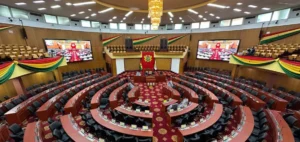A reform of the European energy market is being prepared. Ursula Von der Leyen, President of the European Commission, acknowledges flaws in the design of the European energy market. Thus, it is preparing a reform. She is scheduled to present options on September 14.
According to a leaked document, this is mainly to reduce electricity demand. In addition, the EU is reportedly considering a price cap on sub-marginal (non-gas) production. Finally, excess producer revenues could support consumers.
According to this document:
“The desired effect can only be achieved through a combination of these elements, where demand reduction helps alleviate price pressure [de gros] and revenue from the inframarginal cap helps fund consumer interventions.”
Reforming the European energy market to prepare for winter
This reform is taking place in a particularly tense context. Europe is going through a serious energy crisis and the fear of a shortage is growing. Thus, many states are looking for solutions as a harsh winter is expected.
The first point of this reform of the European energy market, the reduction of electricity demand, is inspired by an initiative adopted by the EU: Save Gas for a Safe Winter. Indeed, on August 5, the EU adopted an emergency plan to reduce its gas consumption by 15%.
In addition, this reform could introduce a new emergency mechanism. The Council could trigger a security of supply alert. In this case, the reduction of gas demand would become mandatory.
However, there are exceptions. This mechanism would not affect Member States that are not interconnected to other gas networks. In addition, those whose electricity grids are not synchronized with the European system will also be exempted.
In addition to the issue of consumption, the reform of the European energy market focuses on a price cap. This one would be for sub-marginal prices. It is then a question of decoupling the returns of these producers from the marginal price of electricity.
In addition, the European Commission is reportedly considering using the excess wholesale market gains allowed by the price cap to fund subsidies. These would then help consumers who are facing soaring energy prices.
What about Great Britain?
Britain has taken a similar approach to the reform of the European energy market. It aims to decouple renewable energies and nuclear power from the marginal gas unit.
According to Renewable UK, fixed price contracts for wind and renewable generation sources reduce bills but also reduce exposure to gas price volatility.
RenewableUK states:
“Proposing new contracts would reduce the risk of increased costs as future commercial agreements expire and gas prices continue to spike.”
Towards an auction system?
JP Morgan analysts believe that a large-scale auction system should be implemented for a majority of hydro, nuclear and renewable energy generation. According to them, the implementation of such a system would be “good news for producers”.
JP Morgan relies on a report from the Financial Times. The latter studied the impact of fixed price contracts for nuclear renewable energy producers in Great Britain. Such contracts could, according to the analysis, save between 5 and 20 billion pounds per year.






















